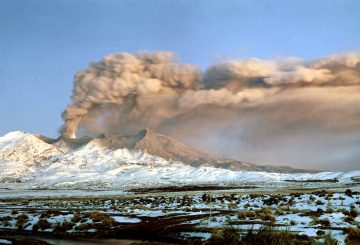Chủ đề “di động khí hậu” hay sự di chuyển của người dân và cộng đồng do biến đổi khí hậu, đã trở thành một vấn đề quan trọng tại hội nghị thượng đỉnh khí hậu COP28 ở Dubai. Có khoảng 25 phiên họp tập trung vào nhu cầu và quyền của những người bị di dời do biến đổi khí hậu.
Vào ngày đầu tiên của hội nghị thượng đỉnh, một thỏa thuận đã đạt được về một quỹ “mất mát và thiệt hại” để hỗ trợ các quốc gia dễ bị ảnh hưởng bởi biến đổi khí hậu. Tuy nhiên, vẫn chưa rõ quỹ này sẽ hoạt động như thế nào cùng với Global Stocktake, một báo cáo về tiến trình hướng tới các mục tiêu của Hiệp định Paris.
Vấn đề di chuyển khí hậu rất khó giải quyết trong Công ước khung của Liên Hợp Quốc về Biến đổi Khí hậu (UNFCCC). Không có sự đồng thuận về cách bảo vệ công dân của các quốc gia bị đe dọa bởi biến đổi khí hậu. Cũng có rất ít ý chí chính trị để thay đổi định nghĩa về “người tị nạn” để bao gồm những người bị ảnh hưởng bởi biến đổi khí hậu.
Một thỏa thuận gần đây giữa Úc và Tuvalu, được gọi là Liên minh Falepili, cung cấp một con đường cho công dân Tuvalu bị ảnh hưởng bởi biến đổi khí hậu để có được quốc tịch Úc. Tuy nhiên, thỏa thuận này yêu cầu Tuvalu phải đồng ý với Australia về bất kỳ thỏa thuận nào liên quan đến an ninh và quốc phòng với các quốc gia khác, điều này đã làm dấy lên lo ngại về chủ quyền quốc gia của Tuvalu.
Các nhà phê bình cho rằng Liên minh Falepili có lợi cho Úc hơn Tuvalu. Họ cũng chỉ ra rằng công dân Tuvaluan không được tham khảo ý kiến về thỏa thuận.
Nghiên cứu cho thấy rằng các cộng đồng bị ảnh hưởng bởi biến đổi khí hậu cần có lựa chọn để ở lại đất nước của họ với phẩm giá. Các chiến lược thành công để duy trì vị trí đã được áp dụng ở Thái Bình Dương. Ví dụ, các cộng đồng ở Samoa đã tìm ra cách thích nghi với biến đổi khí hậu nhằm giảm thiểu cả rủi ro thể chất và tác hại về văn hóa.
Hội nghị thượng đỉnh COP28 cần tập trung vào việc bảo vệ chủ quyền của các quốc gia dễ bị tổn thương và đảm bảo rằng công lý khí hậu được ưu tiên. Các quốc đảo nhỏ và các dân tộc Thái Bình Dương, những người đóng góp rất ít vào nguyên nhân của biến đổi khí hậu, là một trong những quốc gia đầu tiên cảm nhận được tác động của nó. Quyền của mọi người trong việc tự quyết định tương lai thích ứng của họ, bao gồm các lựa chọn để thích ứng tại chỗ, có thể được đề cập tại COP28.




























































